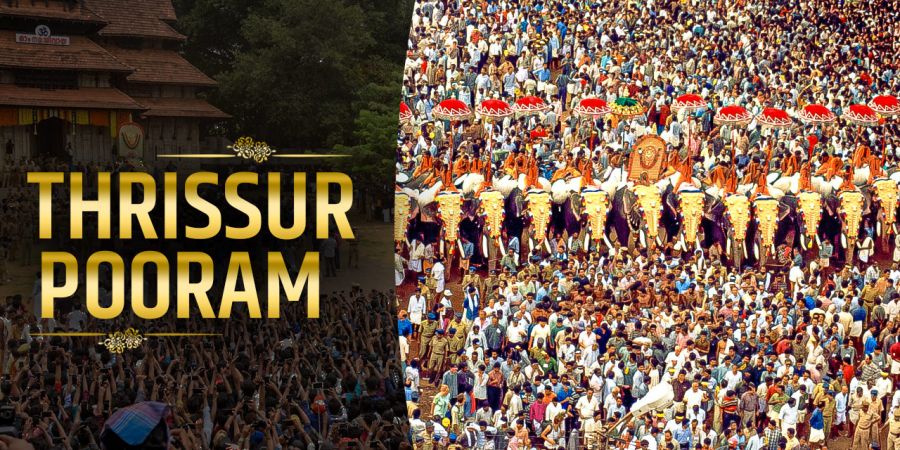

The history of Thrissur Pooram (Poorangalude Pooram) dates back to the late 18th century when the Maharaja of Cochin, Rama Varma, wanted to bring the 10 temples surrounding the Vadakkunnathan Temple in Thrissur under one umbrella to celebrate a grand festival. The temples included in the festival were the Thiruvambady Temple, the Paramekkavu Temple, the Kanimangalam Sastha Temple, the Ayyanthole Kshetra Kavu, the Panamukkumpally Sastha Temple, the Chembukkavu Bhagavathy Temple, the Laloor Bhagavathy Temple, the Choorakkottukavu Bhagavathy Temple, the Nethilakkavu Bhagavathy Temple and the Karamukku Bhagavathy Temple.
The festival was first held in 1798, and since then, it has been an annual event. Over the years, the festival has grown in size and grandeur, and it is now one of the most significant festivals in Kerala.
Legend has it that the rulers of Paramekkavu and Thiruvambady, the two major participating temples, were engaged in a fierce competition to demonstrate their wealth and power. In the early years, the competition involved a display of caparisoned elephants, which were adorned with gold and silver ornaments. Later, the competition evolved into a display of firework and percussion, which is the hallmark of Thrissur Pooram today.
The festival also has a social significance, as it brings together people from all walks of life and all communities. It is a time for rejoicing and sharing, and it promotes social harmony and unity.
Despite facing various challenges over the years, including the outbreak of diseases and political unrest, Thrissur Pooram has continued to flourish and has become an integral part of the cultural and religious fabric of Kerala. Today, it is a major tourist attraction, drawing people from all over the world to witness the grandeur and splendor of this magnificent festival.
Thrissur Pooram is an annual festival held in the city of Thrissur, Kerala, India. It is one of the most famous temple festivals in Kerala and is celebrated on the Pooram Nakshatra (birth star) in the Malayalam month of Medam (April-May). The festival attracts a large number of devotees and tourists from all over the world.
The festival is held at the Vadakkunnathan Temple, which is dedicated to Lord Shiva. The temple is one of the oldest and largest in Kerala, and its history dates back to the 8th century. The festival was first introduced by the Raja of Cochin in the 18th century.
Thrissur Pooram is known for its elaborate elephant procession, which is considered to be one of the largest in Asia. The procession is held on the seventh day of the festival and involves the participation of 30 or more elephants from various temples in and around Thrissur. The elephants are adorned with decorative caparisons, bells, and ornaments, and are accompanied by traditional music and percussion.
The main attraction of the festival is the display of the traditional percussion instruments called "Panchavadyam" and "Panchari Melam". Panchavadyam is a combination of five instruments - Thimila, Maddalam, Ilathalam, Edakka, and Kombu. Panchari Melam is a type of percussion ensemble that includes more than 150 musicians playing drums, cymbals, and other instruments. The sound of these instruments is so powerful that it can be heard from several kilometers away.
The festival also features a spectacular firework display known as the "Sample Vedikettu". The fireworks are set off from the top of the Thekkinkadu Maidan, which is a large open ground in front of the Vadakkunnathan Temple. The display lasts for about three hours and is one of the highlights of the festival.
Another important aspect of the festival is the competition between the two groups of temples - Paramekkavu and Thiruvambady. The competition is known as the "Kudamattam" and involves the display of brightly colored umbrellas of different sizes. The umbrellas are exchanged between the two groups in a rapid and rhythmic manner, accompanied by the beats of the percussion instruments.
Thrissur Pooram is a grand festival that attracts a large number of people from different parts of the world. It is an excellent opportunity to witness the rich culture and traditions of Kerala and to experience the vibrancy and energy of the festival.
